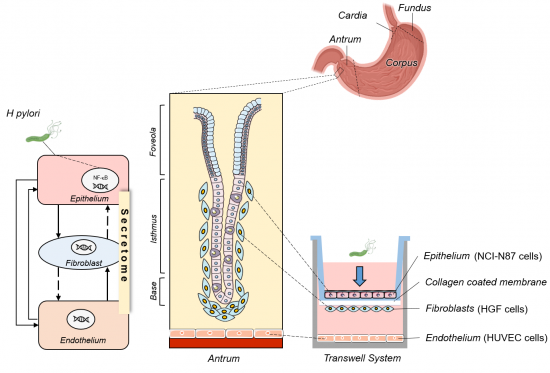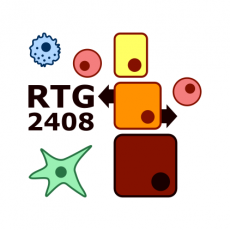Sandro Gogia

Sandro Gogia
PhD Student
Project 15-2
P15-2: Exploitation of epithelial/endothelial microenvironment crosstalk
Sandro GogiaPhD Student
Michael NaumannProject Leader |
Helicobacter pylori is a risk factor in the pathogenesis of various gastroduodenal diseases including gastric cancer. The complexity of the gastric environment makes it difficult to analyze the plethora of cellular processes initiated upon infection. The intricacy of the system stems from the interconnection between the colonized epithelilal cells, the stroma cells (fibroblasts) and angiogenic and lymphangiogenic endothelial cells. To elucidate the cellular crosstalk, we will devise a triple co-culture system comprising of gastric epithelial cells, fibroblasts and endothelial cells, thus mimicking the in vivo gastric environment. We study the impact of H. pylori-induced nuclear factor kappa-light-chain-enhancer of activated B-cells (NF-κB) and Wnt/b-catenin-signaling on inflammation. Prominent regulators of the NF-κB system comprise the therapeutically relevant group of deubiquitinylases (DUBs). The effects of DUBs on NF-κB are examined and evaluated in knockdown/knockout cells. Furthermore, within secretomes, we will investigate the relevant factors involved in maladaptations and metabolic disorders. We anticipate that exploiting the interplay between the above cellular processes will help to understand the key mechanisms of chronic infection.
H. pylori-induced epithelial and endothelial microenvironment crosstalk in the gastric mucosa. Molecular pathological studies of the stomach address the importance of crosstalk in the gastric mucosa upon H. pylori infection. The maladaptive processes in the gastric microenvironment are investigated by tri-culture of NCI-N87, HGF and HUVEC cells. Factors relevant for the maladaptation will be identified in the secretome and assessed in the knockout/knockdown cells. |
Photos: by UMMD, Melitta Schubert/Sarah Kossmann









